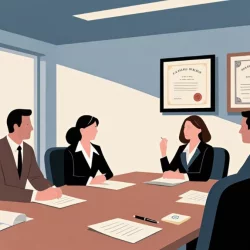Managing the Rate of Bias and Error in Forensic Processes
Recent studies have uncovered an alarming rate of forensic science errors in wrongful conviction cases. Hence, forensic sciences have come under intense criticism. The National Registry of Exonerations claims that hundreds of Americans have been victims of wrongful convictions due to faulty or deceptive forensic science evidence.
The Innocence Project also reports that 24 percent of Innocence Project cases nationwide involved false or misleading forensic evidence, and 52 percent involved the improper application of forensic science. These statistics have inspired scholars and researchers to probe the potential causes of such errors and how to avoid them.
Forensics is unarguably complex as it involves the interaction of science and the law. Forensic examiners and experts are also subject to a wide range of biases that often inevitably result in errors and wrongful convictions. These errors and biases are typically the outcomes of subconscious cognitive patterns.
Even though there have been instances of forensic science errors due to the carelessness or unprofessionalism of the examiner, this is not the typical cause of errors in the field.
What Does Forensic Science Entail?
Forensic science covers forensic disciplines, such as general toxicology, blood pattern analysis, trace evidence, controlled substances, biological/serology screening (including DNA analysis), firearms/tool marks, medicolegal death investigations, fire debris/arson analysis, crime scene investigation, and digital evidence.
Some of these processes are lab-based, while others involve interpreting observed patterns. These processes require the analytical skill and expertise of trained scientists and knowledge of law enforcement, medicine, laboratory techniques, and methods.
The Duty of Forensic Experts and Impact on the Judicial Process
Experts in forensic science compare two patterns or samples and determine whether they "match." It involves comparing a model from an unknown origin to one from a known suspect. If the result shows that they originate from the same source, they "match." For instance, a crime scene examiner can match a suspect's fingerprints to those from the scene or a suspect's handwriting to a sample on a ransom note.
How Cognitive Bias Comes In
Cognitive bias is a type of systematic thinking error that causes people to misinterpret information from their environment, which affects the accuracy and depth of their decision-making and judgments. Although many factors can cause cognitive bias, mental shortcuts (heuristics) are the major contributor. Other causes of cognitive bias are individual motivations, social pressures, emotions, and the low ability of the mind to process complex information.
Conclusion
Cognitive biases and their resulting errors have led to too many wrongful convictions. In recent years, defense lawyers have become more adept at recognizing and challenging flawed forensic evidence and methods. So, the forensics communities need to work together to identify issues and make significant changes.
More to Read:
Previous Posts:










